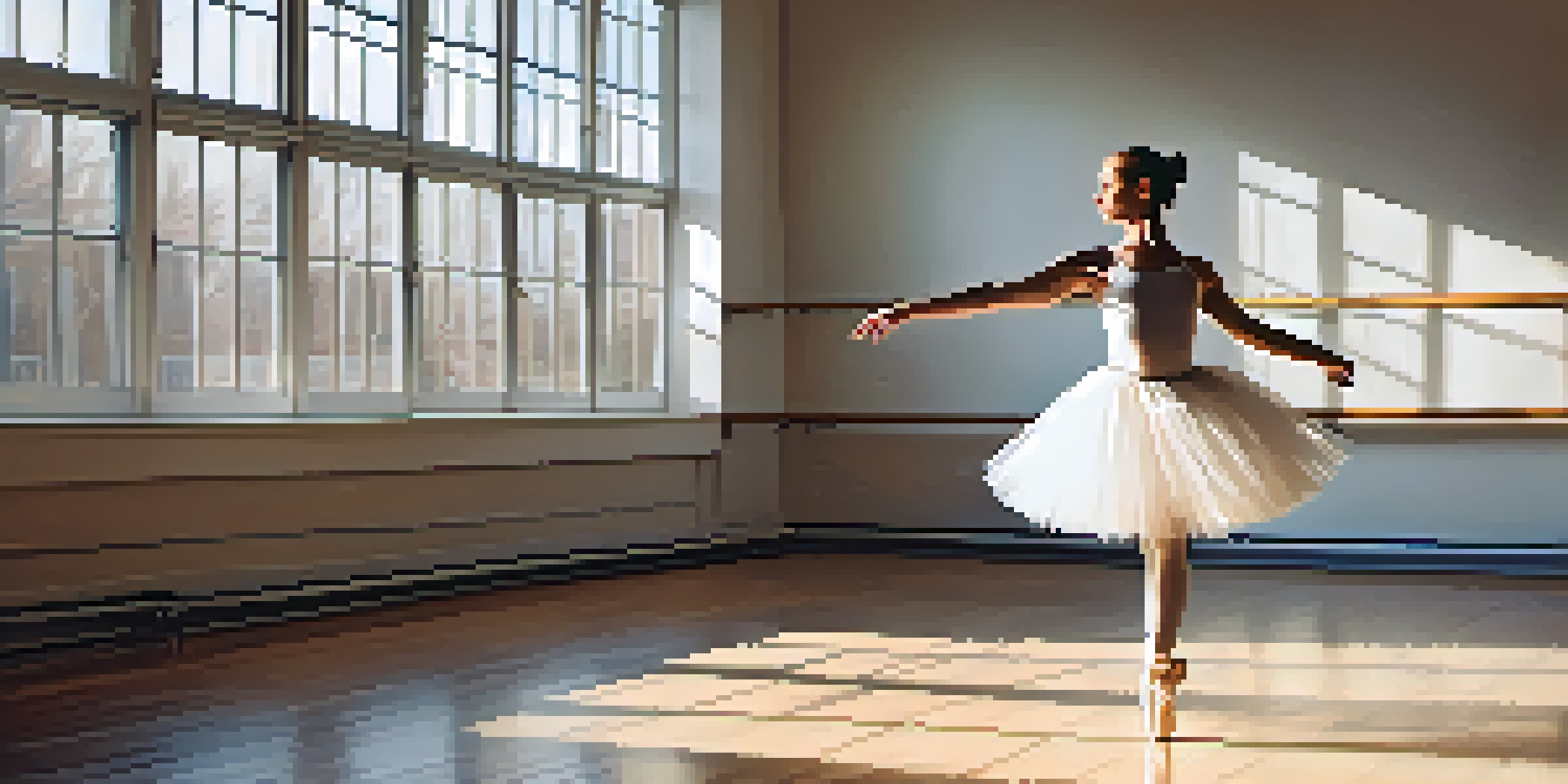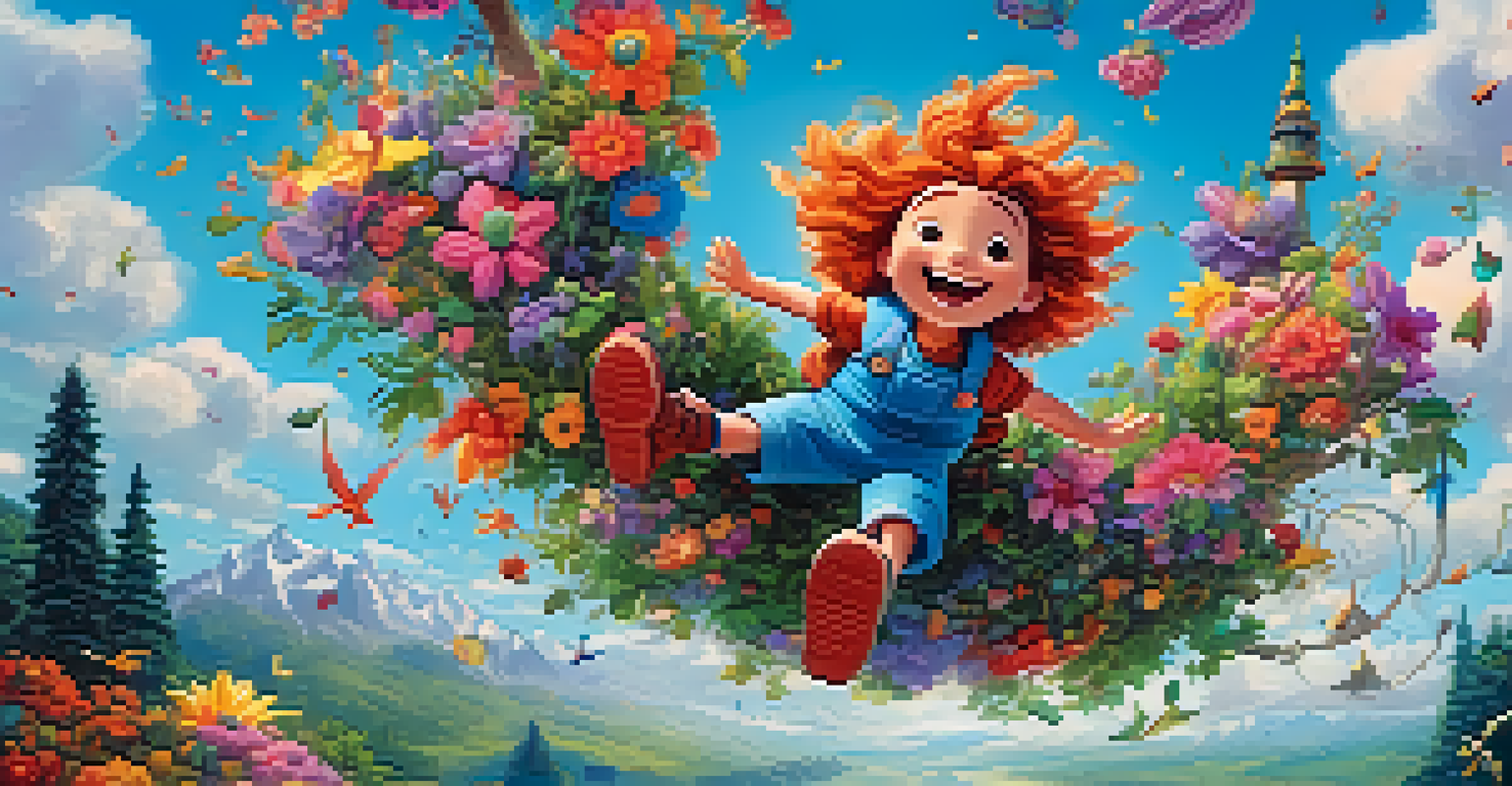Dance and Animation: Crafting Stories through Movement

The Magic of Movement: Dance as a Storytelling Medium
Dance has long been a powerful form of storytelling, capable of expressing emotions and narratives without uttering a single word. Each movement can convey a different feeling, from joy to sorrow, and dancers become storytellers through their bodies. Think of ballet, where a single pirouette can encapsulate a moment of triumph or despair, drawing the audience into the emotional landscape of the performance.
Dance is the hidden language of the soul.
The beauty of dance lies in its ability to translate complex ideas into physical form. A well-choreographed piece can evoke memories, dreams, and longings, providing viewers with a visceral experience. This is similar to how a painter uses colors to evoke feelings; dancers use their movements to paint emotions in the air.
In this way, dance becomes a universal language, transcending barriers of culture and language. Whether it's a traditional folk dance or a contemporary piece, the story told through movement can resonate with anyone, making it an invaluable tool for communication and connection.
Animation: Breathing Life into Stories
Animation, a medium that brings static images to life, has revolutionized storytelling in ways that blend art and technology. Just like dance, animation relies heavily on movement to convey emotions and narratives. Characters can leap, twirl, or even float through their stories, allowing for an imaginative exploration of themes that might be difficult to portray otherwise.

Think about beloved animated films where characters express their feelings through exaggerated movements—like a joyful jump or a dramatic fall. These actions can amplify the narrative, guiding viewers through the emotional highs and lows of the storyline with a visual flair. Animation's flexibility enables storytellers to create fantastical worlds where the laws of physics can be bent, just like the limitations of human expression in dance.
Dance Tells Stories Without Words
Through movement, dance conveys complex emotions and narratives, making it a powerful storytelling medium.
By combining vibrant visuals with compelling movement, animation captivates audiences of all ages. It not only entertains but also serves as a powerful vehicle for conveying deeper messages, often reflecting societal issues or personal journeys.
The Intersection of Dance and Animation
When dance and animation collide, something truly magical happens. This intersection allows choreographers and animators to collaborate, crafting stories that thrive on the fluidity of movement. Imagine a scene where a dancer’s movements are seamlessly transformed into animated characters, creating a bridge between live performance and animated storytelling.
Animation can explain whatever the mind of man can conceive.
This fusion can be seen in various projects, such as animated music videos where dancers' choreography directly influences the animated sequences. Such collaborations not only enhance the visual storytelling but also deepen the emotional impact, as the audience can feel the rhythm and energy of the dance echoed in the animation.
Moreover, this synergy expands creative possibilities, encouraging artists to think outside the box. By leveraging the strengths of both forms, they can create innovative narratives that resonate with viewers on multiple levels, appealing to both the heart and the mind.
Choreography in Animation: Crafting Movement
Creating choreography for animation is a unique art form in itself. Animators must consider the principles of movement, timing, and expression, similar to choreographers working with dancers. They need to visualize how a character would move in a specific context, ensuring that the animation feels natural and fluid.
The process often involves storyboarding and sketching out movements to see how they translate on screen. Just like a dancer practices to perfect their routine, animators iterate and refine each movement until it captures the essence of the character. This meticulous attention to detail ensures that the animation feels authentic and engages the audience.
Animation Enhances Emotional Impact
Animation's ability to depict exaggerated movements allows for imaginative storytelling that resonates emotionally with audiences.
Moreover, animators often draw inspiration from real-life dancers, studying their techniques and styles to infuse realism into their characters. This collaborative approach not only enhances the animation but also pays homage to the art of dance, celebrating its beauty and complexity.
Creating Emotional Resonance through Movement
Both dance and animation excel at conveying emotions, often using movement to evoke specific feelings in the audience. Whether it's the grace of a ballet dancer or the exaggerated gestures of an animated character, movement serves as a powerful tool for emotional expression. This connection is crucial, as stories that resonate emotionally tend to leave a lasting impression on viewers.
For example, in animated films, a character's body language can communicate their inner turmoil or joy without a single line of dialogue. Similarly, in dance, a performer’s facial expressions and physicality can convey a rich emotional narrative. This shared language of movement allows audiences to connect with the characters and their journeys on a deeper level.
When dance and animation combine, the emotional impact is amplified. The synergy of these two forms creates a unique storytelling experience, engaging viewers in a way that is both relatable and profound.
Exploring Cultural Narratives through Dance and Animation
Cultural narratives are often beautifully expressed through both dance and animation. Each culture has its own unique styles of movement that tell stories reflective of its traditions and values. By incorporating these elements into animated works, creators can celebrate and share cultural heritage with a wider audience, fostering appreciation and understanding.
For instance, animated films that depict traditional dances can introduce viewers to different cultures and their histories. This not only educates but also entertains, creating a rich tapestry of storytelling that highlights the diversity of human experience. Dance serves as a lens through which audiences can explore and connect with cultures far removed from their own.
Fusion of Dance and Animation
The collaboration between dance and animation creates innovative narratives, enriching the storytelling experience and expanding creative possibilities.
Moreover, this fusion encourages collaboration among artists from various backgrounds, leading to a more inclusive representation of stories. By blending dance and animation, creators can explore themes of identity, community, and heritage, making their narratives more relatable and impactful.
The Future of Dance and Animation in Storytelling
As technology continues to evolve, the future of dance and animation in storytelling looks promising. Virtual reality (VR) and augmented reality (AR) are opening new avenues for artists to explore, allowing audiences to immerse themselves in dynamic narratives that blend the physical and digital worlds. Imagine stepping inside an animated dance performance, where you can experience the movement from different perspectives.
Additionally, advancements in animation software enable creators to experiment with styles and techniques that were previously unimaginable. They can combine live-action and animation, creating hybrid forms that push the boundaries of traditional storytelling. This innovation invites new audiences and expands the possibilities for how stories can be told through movement.

Ultimately, the collaboration between dance and animation will continue to evolve, offering fresh and exciting ways to engage audiences. As artists embrace these new technologies, we can expect even more captivating stories that resonate on a profound level, ensuring that the art of storytelling remains vibrant and alive.